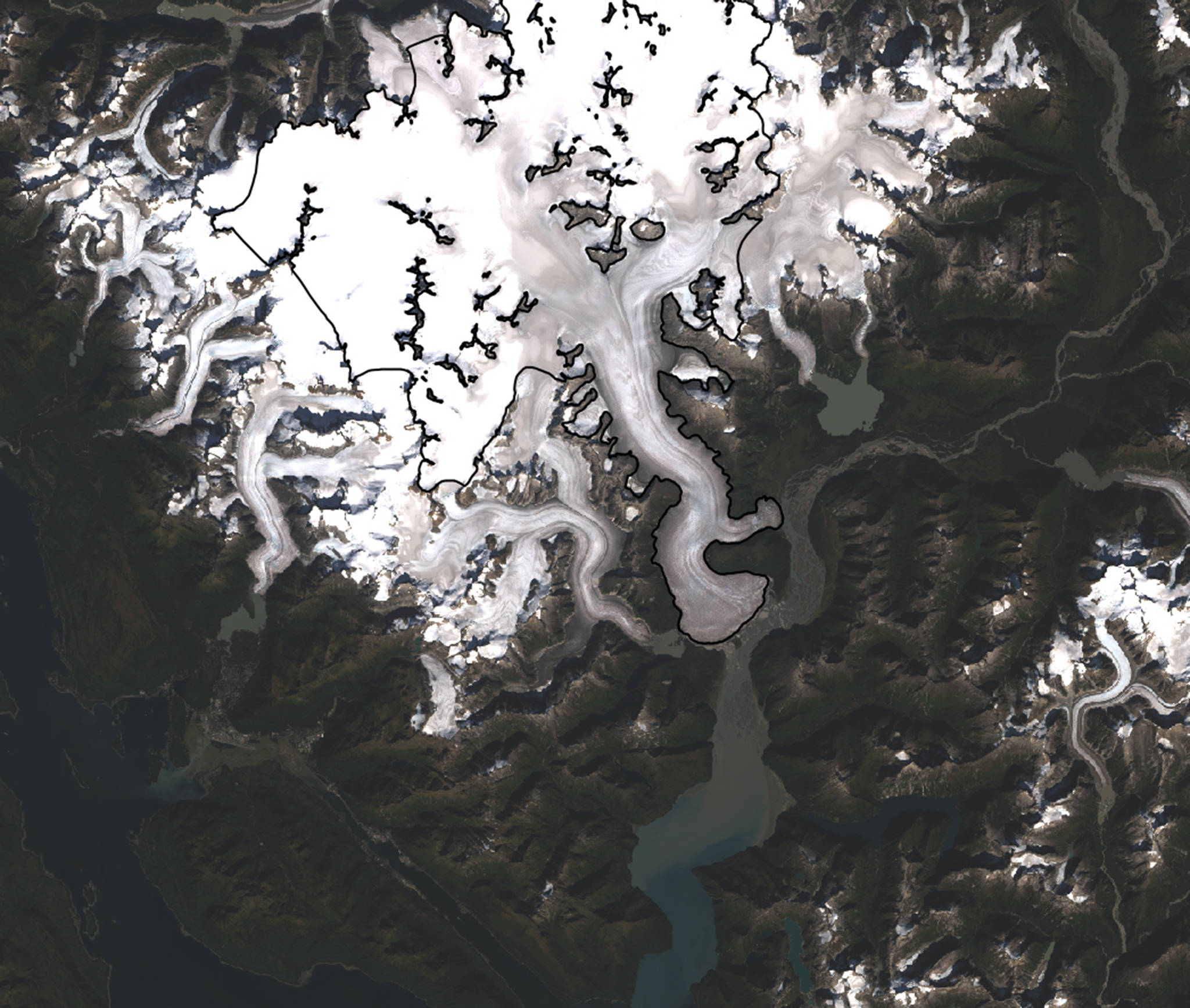Evidence shows Taku Glacier — long being famous for being among the last advancing glaciers in the Juneau Icefield — is retreating, said glaciologists Roman Motyka and Jason Amundson.
But the researchers said the glacier is no less interesting for the change.
“It’s kind of exciting to see a glacier changing, to observe these processes in real time,” Amundson said during a presentation Saturday at the University of Alaska Southeast. “We have this really neat laboratory right in our backyard.”
Amundson said it was sad that the glacier was retreating, but it’s rare to be able to observe a glacier as it transitions from advancing to receding. Many of Southeast Alaska’s glaciers have been in retreat for decades.
What can be gained from studying the Taku Glacier, the largest glacier in the Juneau Icefield?
An “understanding how sensitive a glacier is to climate change,” Amundson said.
He said while it appears a changing climate has caught up with the glacier, a few colder-than-average or snowy years could lead to the glacier stabilizing. However, recent years have been warmer than average with 2019 being the warmest Alaskan year on record.
Amundson said warmer-than-average summers are more likely to lead to retreat than warmer winters.
“Changing the temperature in the winter isn’t going to do a whole lot to the glaciers,” Amundson said.
He said that’s because there’s not much difference for the glacier between temperatures of -30 and -40, but warmer summer temperatures can lead to thinning and retreat.
Aside from a changing climate, the glacier’s more than a century of advance also factors into why it’s now retreating. Motyka said the glacier advanced until it could be affected by climate, and it will retreat until it can start advancing again.
“Retreat becomes unstoppable because it goes into deep water, it calves, and the glacier can’t keep up with the calving. So it undergoes a catastrophic retreat until it reaches a retracted position up fjord somewhere where it becomes shallow again,” Motyka said. “It gets itself a little breathing room, it can start eroding sediments, it can start building up a shoal and pushing that shoal down fjord and start the cycle all over again. Once it’s in that position, its whole dynamic is independent of climate.”
That cycle is known as the tidewater glacier cycle, which can also include periods of stability.
“It can reach an equilibrium where it’s balanced, but it becomes very susceptible to climate at this point,” Motyka said. “This is where Taku Glacier is right now.”
• Contact reporter Ben Hohenstatt at (907)523-2243 or bhohenstatt@juneauempire.com. Follow him on Twitter at @BenHohenstatt.

